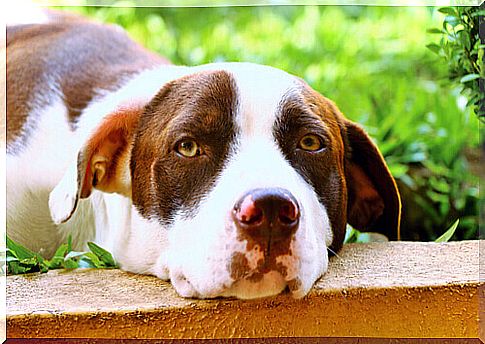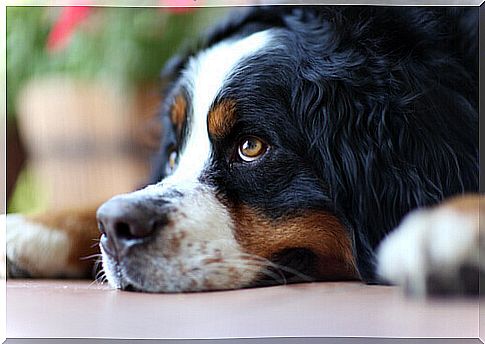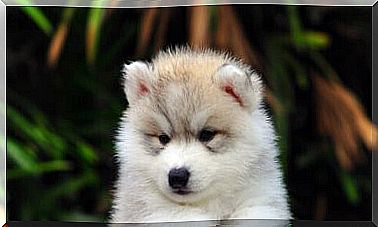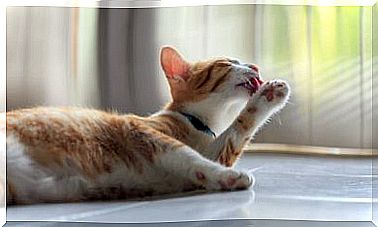Stomach Twist: A Deadly Hazard For The Dog

Often, the excess of gases, liquids and food causes a knot in the dog’s belly, which could die in a matter of hours. One reason could be stomach twisting.
This dilation and subsequent torsion of the dog’s stomach is diagnosed when there is an excessive accumulation of gases, liquids and food and the dog’s stomach does not empty correctly.
It is one of the pathologies among the various canine diseases that can be deadly and lead to death. That’s why it ‘s very important to know the symptoms of stomach twisting and the best way to avoid it. This way we can save our friend’s life.
Stomach twisting occurs mainly in large breeds such as Great Dane, which are more vulnerable to this dangerous disease.
The dog’s stomach does not empty

As we have seen, gastric torsion is the result of a large amount of gas and fluid inside the dog’s stomach. This large volume of substances prevents the pet’s digestive tract from being properly emptied.
In its process, it is normal for the food eaten by our friend to follow its path through the digestive tract and into the intestine. The dog’s stomach has its mechanisms to empty itself when it needs to. Flatulence, vomiting and belching are common pet tools to take care of their stomach health. However, these processes do not always perform their function properly.
Gases, food and excess water accumulated can put a very strong pressure on the pet’s digestive tract, which will over time cause this impulse to cause a twisting of the stomach. The twist makes the process worse: it works like a knot, so it is increasingly difficult for the affected dog to dislodge the gases and food that occupy this vital organ.
How to recognize stomach twist?
Stomach twisting is painful and dangerous, as the dog’s life will be in danger and the animal could die in a short time. This exaggerated dilation will cause a great abdominal pain in the dog, as the rotation of the stomach will cause a strangulation of many important blood vessels and compression of the surrounding organs. For all that, without the due urgent veterinary attention, the dog could collapse (shock) and die in a matter of hours.
Visually, the animal’s abdomen will swell up, and if you give it a light touch, it will sound hollow because it is full of air.
Other symptoms of stomach twisting are:
- Restlessness and anxiety, continuous nervousness in the animal.
- The dog continually looks at its stomach and the ground.
- Pain symptoms will be evident in your abdominal region.
- Sighs, wanting to vomit and not succeeding, or just expels foamy saliva.
- Breathing fast and hard.
How to prevent dilation?
We have to pay attention to the importance of our pet eating their food in a calm and leisurely way. An anxious dog introduces large amounts of food into its digestive tract without chewing it properly: this slows down digestion and the portions of food stay longer in the stomach, where they take up space.
The origin of this dilation can be in eating too quickly, not resting after meals or ingesting large amounts of food.
Other precautionary measures that can be taken are to prevent our pet from exercising after meals and also divide the food portions into three doses, which will be distributed throughout the day. Preventing excessive drinking after eating is another effective measure to take care of your stomach.
Treatment

Before any suspicion that it may be a gastric torsion, it is vitally important to immediately go to a veterinary clinic. Once the dog is diagnosed, the provider will administer fluids and antibiotics intravenously.
The next step will be the sedation of the animal and the introduction of a tube through the mouth to the stomach (orogastric intubation) to release gas and decompress the stomach. If this is not possible, the abdominal wall is punctured with a needle.
After decompression of the stomach, gastric lavage and surgery are performed. With it, one tries to fix the stomach to the costal wall with a method called gastropexy, thus reducing the risk of such a problem happening again.









